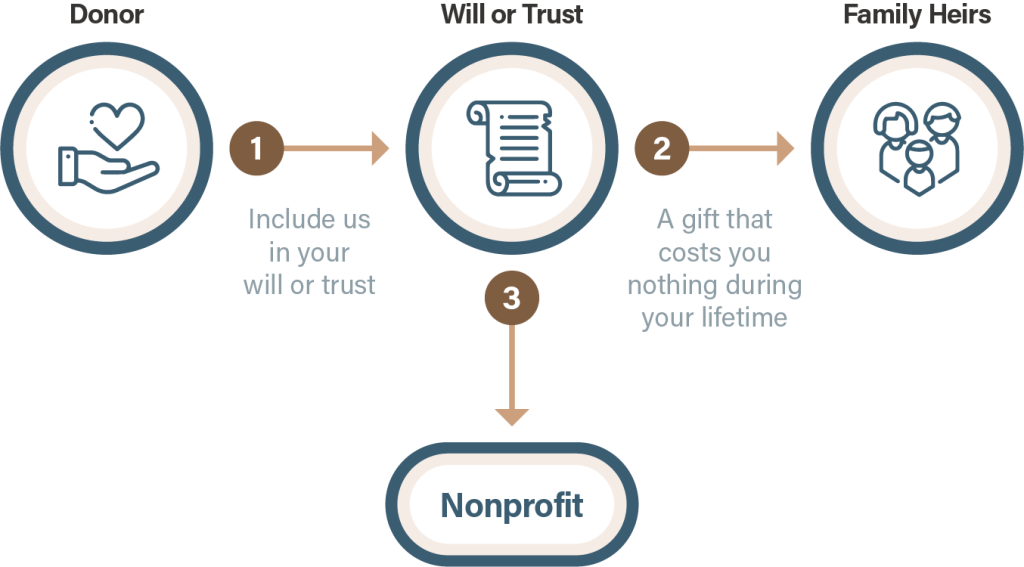How They Work

Making Estate Planning Accessible, Simple, Personal, Secure and free.
Bequests are up, cash is down. Empower your donors to plan their will and invest their legacy in the cause they support the most.
Nonprofit? Here’s your step-by-step comprehensive guide to start a planned giving program.
It’s a gift through your will or trust. It just takes a simple designation and it will not affect your cash flow during your lifetime. It’s easy to revoke if your situation changes.
A bequest – a gift made through a will or trust – can be the easiest gift to make because it costs nothing during a donor’s lifetime. Plus, it’s revocable, so updates or changes are easy when circumstances change. Wills or living trusts can be amended to include a bequest to a nonprofit with a simple codicil. A nonprofit can provide a sample bequest and codicil language to review with the donor’s professional advisor. The main advantage of bequests is that they are easy to understand and there is no additional administration or legal responsibility.
Good for your career. Good for your organization. Subscribe today.
© Copyright 2024. PlannedGiving.com
